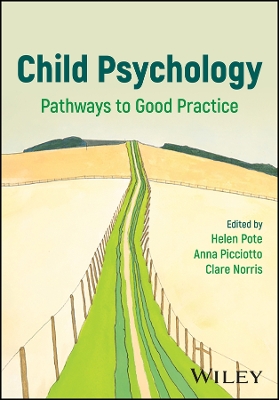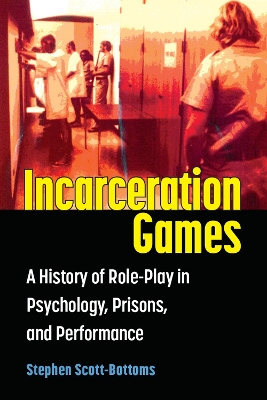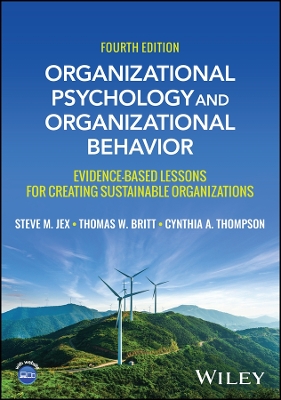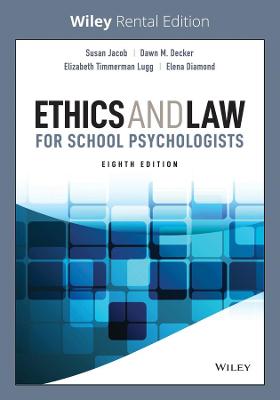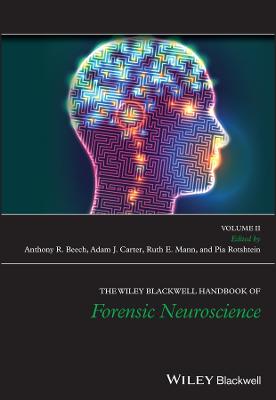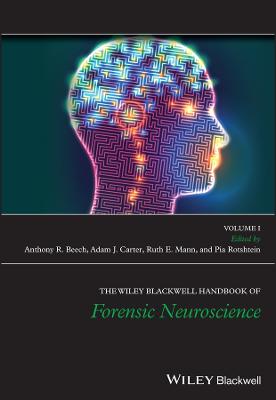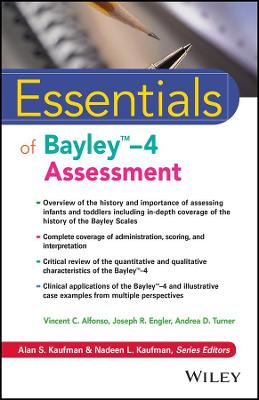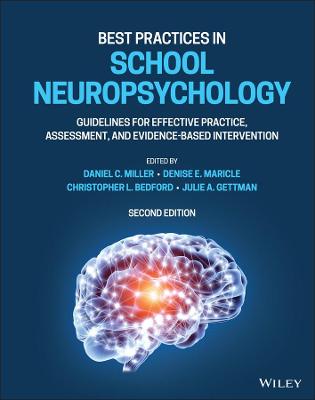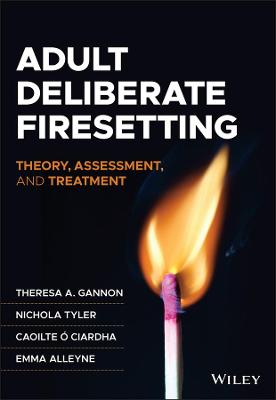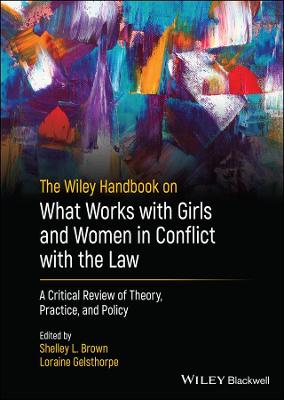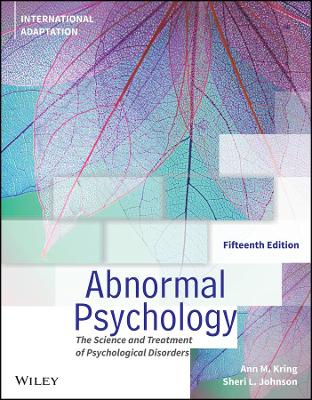Addiction Treatment Homework Planner
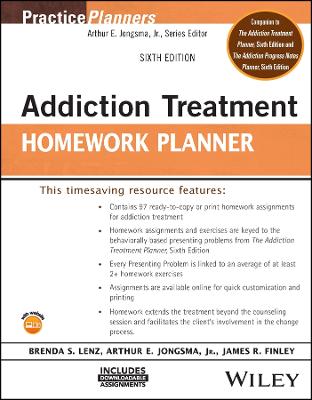 -10%
portes grátis
-10%
portes grátis
Addiction Treatment Homework Planner
Finley, James R.; Lenz, Brenda S.; Jongsma, Arthur E., Jr.
John Wiley & Sons Inc
02/2024
464
Mole
Inglês
9781119987789
15 a 20 dias
666
PracticePlanners (R) Series Preface xii
Preface xiv
About the Author xvi
Introduction 1
Section 1: Adult-Child-of-an-Alcoholic (ACA) Traits 4
Exercise 1.A Addressing ACA Traits in Recovery 5
Exercise 1.B Understanding Family History 9
Section 2: Anger 12
Exercise 2.A Is My Anger Due to Feeling Threatened? 13
Exercise 2.B Is My Anger Due to Unmet Expectations? 16
Section 3: Antisocial Behavior 18
Exercise 3.A Benefits of Helping Others 19
Exercise 3.B Taking Inventory of Destructive Behaviors 23
Section 4: Anxiety 25
Exercise 4.A Anxiety Triggers and Warning Signs 26
Exercise 4.B Coping with Stress 30
Section 5: Attention-Deficit/Hyperactivity Disorder (ADHD)-Adolescent 33
Exercise 5.A Developing a Recovery Program 34
Exercise 5.B Staying Attentive and Other Negotiating Skills 38
Section 6: Attention-Deficit/Hyperactivity Disorder (ADHD)-Adult 41
Exercise 6.A From Recklessness to Calculated Risks 42
Exercise 6.B Getting Organized 46
Exercise 6.C Self-Soothing: Calm Down, Slow Down 50
Section 7: Bipolar Disorder 53
Exercise 7.A Early Warning Signs of Mania/Hypomania 54
Exercise 7.B Mania, Addiction, and Recovery 57
Section 8: Borderline Traits 60
Exercise 8.A Forming Stable Relationships 61
Exercise 8.B Seeing That We're All Just Human 65
Section 9: Childhood Trauma 68
Exercise 9.A Corresponding with My Childhood Self 69
Exercise 9.B Setting and Maintaining Boundaries 73
Section 10: Chronic Pain 75
Exercise 10.A Coping with Addiction and Chronic Pain 76
Exercise 10.B Managing Pain Without Addictive Drugs 80
Section 11: Conduct Disorder/Delinquency 83
Exercise 11.A How Do You Do That? 84
Exercise 11.B Trading Places 87
Section 12: Dangerousness/Lethality 90
Exercise 12.A Anger as a Drug 91
Exercise 12.B Managing Risk 95
Section 13: Dependent Traits 98
Exercise 13.A Building My Support Network 99
Exercise 13.B How Interdependent Am I? 103
Section 14: Depression-Unipolar 106
Exercise 14.A Correcting Distorted Thinking 107
Exercise 14.B Gratitude 111
Section 15: Eating Disorders and Obesity 113
Exercise 15.A Creating a Preliminary Eating and Health Plan 114
Exercise 15.B Eating Patterns Self-Assessment 118
Section 16: Family Conflicts 121
Exercise 16.A Creating Positive Family Rituals 123
Exercise 16.B Identifying Conflict Themes 127
Section 17: Gambling 130
Exercise 17.A Consequences and Benefits 131
Exercise 17.B Understanding Nonchemical Addictions 135
Section 18: Grief/Loss Unresolved 138
Exercise 18.A Am I Having Difficulty Letting Go? 139
Exercise 18.B Moving on After Loss 143
Exercise 18.C What Would They Want for Me? 148
Section 19: Impulsivity 150
Exercise 19.A Handling Crisis Without Impulsivity 151
Exercise 19.B Learning to Think Things Through 155
Section 20: Legal Problems 157
Exercise 20.A Handling Tough Situations in a Healthy Way 158
Exercise 20.B What's Addiction Got to Do with My Problems? 162
Section 21: Living Environment Deficiency 165
Exercise 21.A Assessing My Environment 167
Exercise 21.B What Would My Ideal Life Look Like? 170
Section 22: Medical Issues 173
Exercise 22.A Coping with Addiction and Other Medical Problems 174
Exercise 22.B Physical and Emotional Self-Care 178
Section 23: Narcissistic Traits 181
Exercise 23.A Being Genuinely Altruistic 182
Exercise 23.B Getting Outside of Myself 185
Section 24: Nicotine Use/Dependence 187
Exercise 24.A Assessing Readiness and Preparing to Quit 188
Exercise 24.B Addressing Relapse Triggers 192
Exercise 24.C Use of Affirmations for Change 196
Section 25: Obsessive-Compulsive Disorder (OCD) 199
Exercise 25.A Interrupting Compulsive Thoughts and Urges 201
Exercise 25.B Reducing Compulsive Behaviors 206
Section 26: Occupational Problems 210
Exercise 26.A Interest and Skill Self-Assessment 211
Exercise 26.B Workplace Problems and Solutions 215
Section 27: Opioid Use Disorder 218
Exercise 27.A Values Clarification and Consistency Check 219
Exercise 27.B Starting Again, Not Over 223
Section 28: Oppositional Defiant Behavior 226
Exercise 28.A Analyzing Acting-Out Behavior 227
Exercise 28.B Learning to Ask Instead of Demand 230
Section 29: Panic Disorder 233
Exercise 29.A Persistence in Spite of Panic 234
Exercise 29.B Mastering Positive Feedback to Face Fears 239
Section 30: Parent-Child Relational Problem 242
Exercise 30.A Am I Teaching My Child Addictive Patterns? 243
Exercise 30.B What Do I Want for My Children? 247
Section 31: Partner Relational Conflicts 250
Exercise 31.A Communication Skills 251
Exercise 31.B Relationship Assessment 257
Section 32: Peer Group Negativity 260
Exercise 32.A Creating Recovery Peer Support 261
Exercise 32.B What Do I Need and How Do I Get It? 264
Section 33: Posttraumatic Stress Disorder (PTSD) 267
Exercise 33.A Coping with Addiction and PTSD 268
Exercise 33.B Safe and Peaceful Place Meditation 272
Section 34: Psychosis 275
Exercise 34.A Coping with Addiction and Schizophrenia Spectrum Disorders 276
Exercise 34.B Planning a Stable Life 280
Section 35: Readiness to Change 283
Exercise 35.A Addressing Readiness and Motivation 284
Exercise 35.B Problem Identification: Is It Addiction? 288
Section 36: Relapse Proneness 291
Exercise 36.A Early Warning Signs of Relapse 292
Exercise 36.B Identifying Relapse Triggers and Cues 296
Exercise 36.C Relapse Prevention Planning 302
Section 37: Self-Care Deficits-Primary 305
Exercise 37.A Assessing Self-Care Deficits 306
Exercise 37.B Relating Self-Care Deficits to My Addiction 310
Section 38: Self-Care Deficits-Secondary 312
Exercise 38.A Filling in Self-Care Gaps 313
Exercise 38.B Working Toward Interdependence 317
Section 39: Self-Harm 319
Exercise 39.A Understanding Self-Harm and Addiction 320
Exercise 39.B Self-Harm Risk Factors, Triggers, and Early Warning Signs 324
Section 40: Sexual Abuse 327
Exercise 40.A It Wasn't My Fault 329
Exercise 40.B Internal and External Resources for Safety 333
Section 41: Sexual Promiscuity 335
Exercise 41.A Is It Romance or Is It Fear? 336
Exercise 41.B Working Through Shame 340
Section 42: Sleep Disturbance 342
Exercise 42.A Assessing Sleep Problems 343
Exercise 42.B Improving Sleep Hygiene 347
Section 43: Social Anxiety 349
Exercise 43.A Understanding Thoughts, Worries, and Fears 351
Exercise 43.B Action Plan to Address Social Anxiety 356
Section 44: Spiritual Confusion 359
Exercise 44.A Understanding Spirituality 360
Exercise 44.B Finding a Higher Power That Makes Sense 364
Section 45: Substance-Induced Disorders 367
Exercise 45.A Using My Support Network 369
Exercise 45.B Exploring Treatment and Recovery Options 372
Section 46: Substance Intoxication/Withdrawal 375
Exercise 46.A Coping with Postacute Withdrawal (PAW) 376
Exercise 46.B Using Books and Other Media Resources 379
Section 47: Substance Use Disorders 381
Exercise 47.A Consequences of Continuing Addictive Lifestyles 382
Exercise 47.B Alternatives to Addictive Behavior 385
Exercise 47.C Personal Recovery Planning 388
Exercise 47.D Taking Daily Inventory 394
Exercise 47.E Making Change Happen 397
Exercise 47.F Balancing Recovery, Family, and Work 401
Section 48: Suicidal Ideation 404
Exercise 48.A Problem Solving and Safety Planning 405
Exercise 48.B Why Do I Matter and Who Cares? 409
Appendix A: Alternate Assignments for Presenting Problems 411
Appendix B: Suggested References by Select Chapters/Areas of Clinical Focus 436
Appendix C: Alphabetical Index of Exercises 446
PracticePlanners (R) Series Preface xii
Preface xiv
About the Author xvi
Introduction 1
Section 1: Adult-Child-of-an-Alcoholic (ACA) Traits 4
Exercise 1.A Addressing ACA Traits in Recovery 5
Exercise 1.B Understanding Family History 9
Section 2: Anger 12
Exercise 2.A Is My Anger Due to Feeling Threatened? 13
Exercise 2.B Is My Anger Due to Unmet Expectations? 16
Section 3: Antisocial Behavior 18
Exercise 3.A Benefits of Helping Others 19
Exercise 3.B Taking Inventory of Destructive Behaviors 23
Section 4: Anxiety 25
Exercise 4.A Anxiety Triggers and Warning Signs 26
Exercise 4.B Coping with Stress 30
Section 5: Attention-Deficit/Hyperactivity Disorder (ADHD)-Adolescent 33
Exercise 5.A Developing a Recovery Program 34
Exercise 5.B Staying Attentive and Other Negotiating Skills 38
Section 6: Attention-Deficit/Hyperactivity Disorder (ADHD)-Adult 41
Exercise 6.A From Recklessness to Calculated Risks 42
Exercise 6.B Getting Organized 46
Exercise 6.C Self-Soothing: Calm Down, Slow Down 50
Section 7: Bipolar Disorder 53
Exercise 7.A Early Warning Signs of Mania/Hypomania 54
Exercise 7.B Mania, Addiction, and Recovery 57
Section 8: Borderline Traits 60
Exercise 8.A Forming Stable Relationships 61
Exercise 8.B Seeing That We're All Just Human 65
Section 9: Childhood Trauma 68
Exercise 9.A Corresponding with My Childhood Self 69
Exercise 9.B Setting and Maintaining Boundaries 73
Section 10: Chronic Pain 75
Exercise 10.A Coping with Addiction and Chronic Pain 76
Exercise 10.B Managing Pain Without Addictive Drugs 80
Section 11: Conduct Disorder/Delinquency 83
Exercise 11.A How Do You Do That? 84
Exercise 11.B Trading Places 87
Section 12: Dangerousness/Lethality 90
Exercise 12.A Anger as a Drug 91
Exercise 12.B Managing Risk 95
Section 13: Dependent Traits 98
Exercise 13.A Building My Support Network 99
Exercise 13.B How Interdependent Am I? 103
Section 14: Depression-Unipolar 106
Exercise 14.A Correcting Distorted Thinking 107
Exercise 14.B Gratitude 111
Section 15: Eating Disorders and Obesity 113
Exercise 15.A Creating a Preliminary Eating and Health Plan 114
Exercise 15.B Eating Patterns Self-Assessment 118
Section 16: Family Conflicts 121
Exercise 16.A Creating Positive Family Rituals 123
Exercise 16.B Identifying Conflict Themes 127
Section 17: Gambling 130
Exercise 17.A Consequences and Benefits 131
Exercise 17.B Understanding Nonchemical Addictions 135
Section 18: Grief/Loss Unresolved 138
Exercise 18.A Am I Having Difficulty Letting Go? 139
Exercise 18.B Moving on After Loss 143
Exercise 18.C What Would They Want for Me? 148
Section 19: Impulsivity 150
Exercise 19.A Handling Crisis Without Impulsivity 151
Exercise 19.B Learning to Think Things Through 155
Section 20: Legal Problems 157
Exercise 20.A Handling Tough Situations in a Healthy Way 158
Exercise 20.B What's Addiction Got to Do with My Problems? 162
Section 21: Living Environment Deficiency 165
Exercise 21.A Assessing My Environment 167
Exercise 21.B What Would My Ideal Life Look Like? 170
Section 22: Medical Issues 173
Exercise 22.A Coping with Addiction and Other Medical Problems 174
Exercise 22.B Physical and Emotional Self-Care 178
Section 23: Narcissistic Traits 181
Exercise 23.A Being Genuinely Altruistic 182
Exercise 23.B Getting Outside of Myself 185
Section 24: Nicotine Use/Dependence 187
Exercise 24.A Assessing Readiness and Preparing to Quit 188
Exercise 24.B Addressing Relapse Triggers 192
Exercise 24.C Use of Affirmations for Change 196
Section 25: Obsessive-Compulsive Disorder (OCD) 199
Exercise 25.A Interrupting Compulsive Thoughts and Urges 201
Exercise 25.B Reducing Compulsive Behaviors 206
Section 26: Occupational Problems 210
Exercise 26.A Interest and Skill Self-Assessment 211
Exercise 26.B Workplace Problems and Solutions 215
Section 27: Opioid Use Disorder 218
Exercise 27.A Values Clarification and Consistency Check 219
Exercise 27.B Starting Again, Not Over 223
Section 28: Oppositional Defiant Behavior 226
Exercise 28.A Analyzing Acting-Out Behavior 227
Exercise 28.B Learning to Ask Instead of Demand 230
Section 29: Panic Disorder 233
Exercise 29.A Persistence in Spite of Panic 234
Exercise 29.B Mastering Positive Feedback to Face Fears 239
Section 30: Parent-Child Relational Problem 242
Exercise 30.A Am I Teaching My Child Addictive Patterns? 243
Exercise 30.B What Do I Want for My Children? 247
Section 31: Partner Relational Conflicts 250
Exercise 31.A Communication Skills 251
Exercise 31.B Relationship Assessment 257
Section 32: Peer Group Negativity 260
Exercise 32.A Creating Recovery Peer Support 261
Exercise 32.B What Do I Need and How Do I Get It? 264
Section 33: Posttraumatic Stress Disorder (PTSD) 267
Exercise 33.A Coping with Addiction and PTSD 268
Exercise 33.B Safe and Peaceful Place Meditation 272
Section 34: Psychosis 275
Exercise 34.A Coping with Addiction and Schizophrenia Spectrum Disorders 276
Exercise 34.B Planning a Stable Life 280
Section 35: Readiness to Change 283
Exercise 35.A Addressing Readiness and Motivation 284
Exercise 35.B Problem Identification: Is It Addiction? 288
Section 36: Relapse Proneness 291
Exercise 36.A Early Warning Signs of Relapse 292
Exercise 36.B Identifying Relapse Triggers and Cues 296
Exercise 36.C Relapse Prevention Planning 302
Section 37: Self-Care Deficits-Primary 305
Exercise 37.A Assessing Self-Care Deficits 306
Exercise 37.B Relating Self-Care Deficits to My Addiction 310
Section 38: Self-Care Deficits-Secondary 312
Exercise 38.A Filling in Self-Care Gaps 313
Exercise 38.B Working Toward Interdependence 317
Section 39: Self-Harm 319
Exercise 39.A Understanding Self-Harm and Addiction 320
Exercise 39.B Self-Harm Risk Factors, Triggers, and Early Warning Signs 324
Section 40: Sexual Abuse 327
Exercise 40.A It Wasn't My Fault 329
Exercise 40.B Internal and External Resources for Safety 333
Section 41: Sexual Promiscuity 335
Exercise 41.A Is It Romance or Is It Fear? 336
Exercise 41.B Working Through Shame 340
Section 42: Sleep Disturbance 342
Exercise 42.A Assessing Sleep Problems 343
Exercise 42.B Improving Sleep Hygiene 347
Section 43: Social Anxiety 349
Exercise 43.A Understanding Thoughts, Worries, and Fears 351
Exercise 43.B Action Plan to Address Social Anxiety 356
Section 44: Spiritual Confusion 359
Exercise 44.A Understanding Spirituality 360
Exercise 44.B Finding a Higher Power That Makes Sense 364
Section 45: Substance-Induced Disorders 367
Exercise 45.A Using My Support Network 369
Exercise 45.B Exploring Treatment and Recovery Options 372
Section 46: Substance Intoxication/Withdrawal 375
Exercise 46.A Coping with Postacute Withdrawal (PAW) 376
Exercise 46.B Using Books and Other Media Resources 379
Section 47: Substance Use Disorders 381
Exercise 47.A Consequences of Continuing Addictive Lifestyles 382
Exercise 47.B Alternatives to Addictive Behavior 385
Exercise 47.C Personal Recovery Planning 388
Exercise 47.D Taking Daily Inventory 394
Exercise 47.E Making Change Happen 397
Exercise 47.F Balancing Recovery, Family, and Work 401
Section 48: Suicidal Ideation 404
Exercise 48.A Problem Solving and Safety Planning 405
Exercise 48.B Why Do I Matter and Who Cares? 409
Appendix A: Alternate Assignments for Presenting Problems 411
Appendix B: Suggested References by Select Chapters/Areas of Clinical Focus 436
Appendix C: Alphabetical Index of Exercises 446

